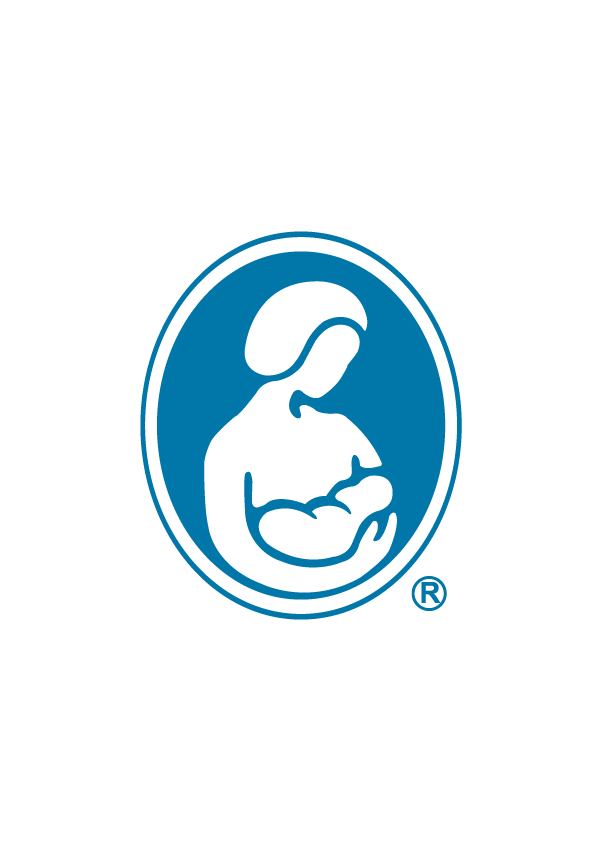翻译:鲁鹭
审校:Missy,戎锦,Daisy
妈妈们常常对宝宝出牙会如何影响母乳喂养关系感到好奇。有时我们听到的说法是担心宝宝会咬妈妈,或出牙会导致喂奶变得不舒服。有些妈妈甚至会考虑断奶。世界卫生组织(WHO)建议母乳喂养持续最少两年。同样,美国儿科学会(AAP)建议母乳喂养持续至少一年,之后则由宝宝和妈妈的共同意愿来决定。大部分宝宝会在第一年里长出第一颗牙齿,不少妈妈可能想知道长牙期该如何进行哺乳。
当宝宝正确地含乳时,他的嘴唇外翻、他的牙龈在乳晕(环绕乳头的深色区域)的后方施力,这是我们理解这一问题的重点。他的下牙被舌头覆盖,因而完全接触不到妈妈的乳晕。正因为如此,一个正确衔乳、积极吃奶的婴儿不会咬人。然而,如果宝宝只含住了乳头,他就会咬住乳头使妈妈感到疼痛.。良好的哺乳姿势和含乳技巧能避免被咬的疼痛。
许多妈妈发现真正的挑战发生在婴儿牙齿萌出的活跃期,而非牙齿完全萌出后。出牙期,宝宝会感到明显不适,他们有时会调整姿势,或改变含乳方式,以避免碰到牙龈上的痛点。这就导致妈妈的乳头出现短暂疼痛或不适。以下是一些可能有用的建议:
❖喂奶之前:
◆给宝宝提供一块凉的、湿的毛巾或者冷藏过的磨牙玩具来咀嚼。
◆如果宝宝目前有吃固体食物,给他一个冻过的面包圈(或其他硬、冷的食物)。给宝宝任何食物时,都要密切关注,避免发生窒息。当食物开始变得潮湿或出现碎裂时,把食物拿走。
◆轻轻用干净的手指按摩宝宝的牙龈。
◆在使用非处方药品来轻度麻醉牙龈缓解不适前咨询宝宝的儿科医生。这些产品可能也使宝宝的舌头,偶尔也包括妈妈的乳晕感到麻木,给哺乳造成困难。
❖喂奶时:
◆试试不同的哺乳姿势,并确保宝宝吃奶时,他的体重能得到稳妥的支撑。
◆每次哺乳都确认宝宝已经正确衔乳。温柔地提示宝宝衔乳前要把嘴巴张得很大。
◆在宝宝对你的乳头用力之前,他得把舌头移开以免咬伤自己。一位善于观察的妈妈能及时将手指塞进宝宝的嘴角,这样被咬住的就是手指而非乳头。
◆在母乳会网站阅读其他关于乳房被咬的建议。
❖喂奶之后:
◆可用凉水冲洗乳头,因为有的妈妈感觉宝宝在出牙期增加的唾液会使乳头不适。
◆有的妈妈感觉涂一些专为母乳妈妈研制的100%羊毛脂膏会有帮助。
有时,宝宝的新牙萌出会以其他形式造成妈妈的困扰。妈妈可能发现乳晕上有宝宝的牙印,或宝宝在含乳或松开乳头时,牙齿刮擦到妈妈的乳晕。如果这情况发生在你的身上,下面的建议可能有用:
◆确认宝宝的嘴巴大大张开并且良好地含乳。
◆确认宝宝姿势良好,他的体重得到了很好的支撑。有时宝宝重心不稳、下坠会拉扯乳头,并造成上述问题。
当宝宝长牙后,一些妈妈会引入鸭嘴杯。宝宝通常喜欢咬鸭嘴,有些宝宝会在吃奶时,就会象咬鸭嘴一样咬乳房。如果你怀疑这种情况发生了,以下是一些可以尝试的措施:
◆暂停使用鸭嘴杯。
◆试着使用敞口杯(只用于装水,因易于清洁)
◆试着给普通杯子配上吸管和盖子使用。
许多妈妈发现,当宝宝进入快乐和挑战并存的学步期后,在宝宝出牙期间继续哺乳是母职工具箱里增加的一件宝贵的工具。如您尝试过上述建议后,仍感觉遇到困难,请联系当地的国际母乳会哺乳辅导,她将在您宝宝成长的里程碑时期里,给您提供更多的支持和信息。
更多信息资源《母乳喂养百科》,全新第8版,著者:国际母乳会,是对母乳妈妈而言最完整的母乳喂养信息库。
Do I Need to Stop Breastfeeding When My Baby Gets Teeth?
Mothers are often curious about howteething will affect their breastfeeding relationship. Sometimes there isconcern that baby may bite, or that teething will cause breastfeeding to becomeuncomfortable. Some mothers may even consider weaning. The World HealthOrganization (WHO) recommends that breastfeeding continue for a minimum of twofull years, and similarly, the American Academy of Pediatrics (AAP) recommendsthat breastfeeding continue a minimum of one year, and as long thereafter asbaby and mother mutually desire. Some mothers may wonder how theserecommendations can be applied when most babies cut their first teeth duringtheir first year.
It is important to understand that when ababy is latched on to the breast correctly, his lips are flanged and his gumsland far back on the areola (the dark area around the nipple). His bottom teethare covered by his tongue and do not come in contact with the mother’s areolaat all. For this reason, a baby who is latched on correctly and activelynursing cannot bite. However, if a baby is latched onto the nipple only, thebaby can clamp down and cause pain to the mother’s nipple. Good positioning andlatch-on techniques can prevent painful bites.
Many mothers find the real challenge occursduring the time that the baby is actively cutting teeth, rather than after theteeth have erupted. Babies can experience significant discomfort due toteething and will sometimes alter their positioning or latch to avoid hittingthe sore spots on their gums. This can cause mothers temporary nipple sorenessor discomfort. Here are some suggestions that might help:
Before Nursing:
◆Offer your baby a cold,wet washcloth or a cold teething toy to chew on.
◆If baby is eatingsolids, offer a frozen bagel (or other hard, cold food). As with any food,watch baby closely to avoid choking, and discard the food once it begins to getsoggy and disintegrate.
◆Try massaging yourbaby’s gums with a clean finger.
◆Before usingover-the-counter gum numbing preparations, consult your baby’s doctor. Theseproducts may also numb baby’s tongue, and occasionally mother’s areola, makingbreastfeeding difficult.
During Nursing:
◆Try different nursingpositions and ensure that the weight of your baby’s body is well supported whenhe is latched on.
◆Make sure that babylatches on well every time. Gently remind him to open wide before latching on.
◆Before baby will clampdown on the nipple, he has to move his tongue out of the way or risk bitinghimself. The observant mother can be ready to stick a finger in the corner ofhis mouth so the clamping is done on the finger and not the nipple.
◆Read more suggestionsfor dealing with biting in our Biting FAQ.
After Nursing:
◆Consider rinsing yournipples with cool water, as some mothers find that baby’s increased saliva fromteething irritates the nipples.
◆Some mothers find ithelpful to apply a 100% lanolin preparation intended for nursing mothers.
On occasion, baby’s new teeth can irritatein other ways. A mother may find that baby’s teeth leave indentions on herareola, or baby’s teeth scrape as he latches on or off. If this happens to you,it might help to:
◆Assure that baby openswide and latches on well.
◆Assure that baby ispositioned well, and his weight is well supported. Sometimes the weight of babycan drag down the nipple and contribute to the problem.
Around the time that a baby gets teeth,many mothers introduce a sippy cup. Babies often chew on the spouts of thesecups and some babies might transfer this same mouth activity to the breast. Ifyou suspect this is happening, here are a few things to try:
◆Take a break from thecup for a while.
◆Try an open cup (wateronly for easy clean up).
◆Try a cup with a strawand lid.
Many mothers find that continuing to nurseas their baby cuts teeth adds a priceless tool to their toolbox when the joysand challenges of toddlerhood begin. If you are still experiencing difficultiesafter trying the above suggestions, contact a local La Leche League Leader whocan offer more support and information during this milestone in your baby’slife.
Resources for Additional Information
THE WOMANLY ART OF BREASTFEEDING, NEW 8thEdition, published by La Leche League International, is the most completeresource available for the breastfeeding mother.
THE BREASTFEEDING ANSWER BOOK (2003), p.478
American Academy of Pediatrics PolicyStatement on Breastfeeding and the Use of Human Milk
World Health Organization Global Strategyon Exclusive Breastfeeding

